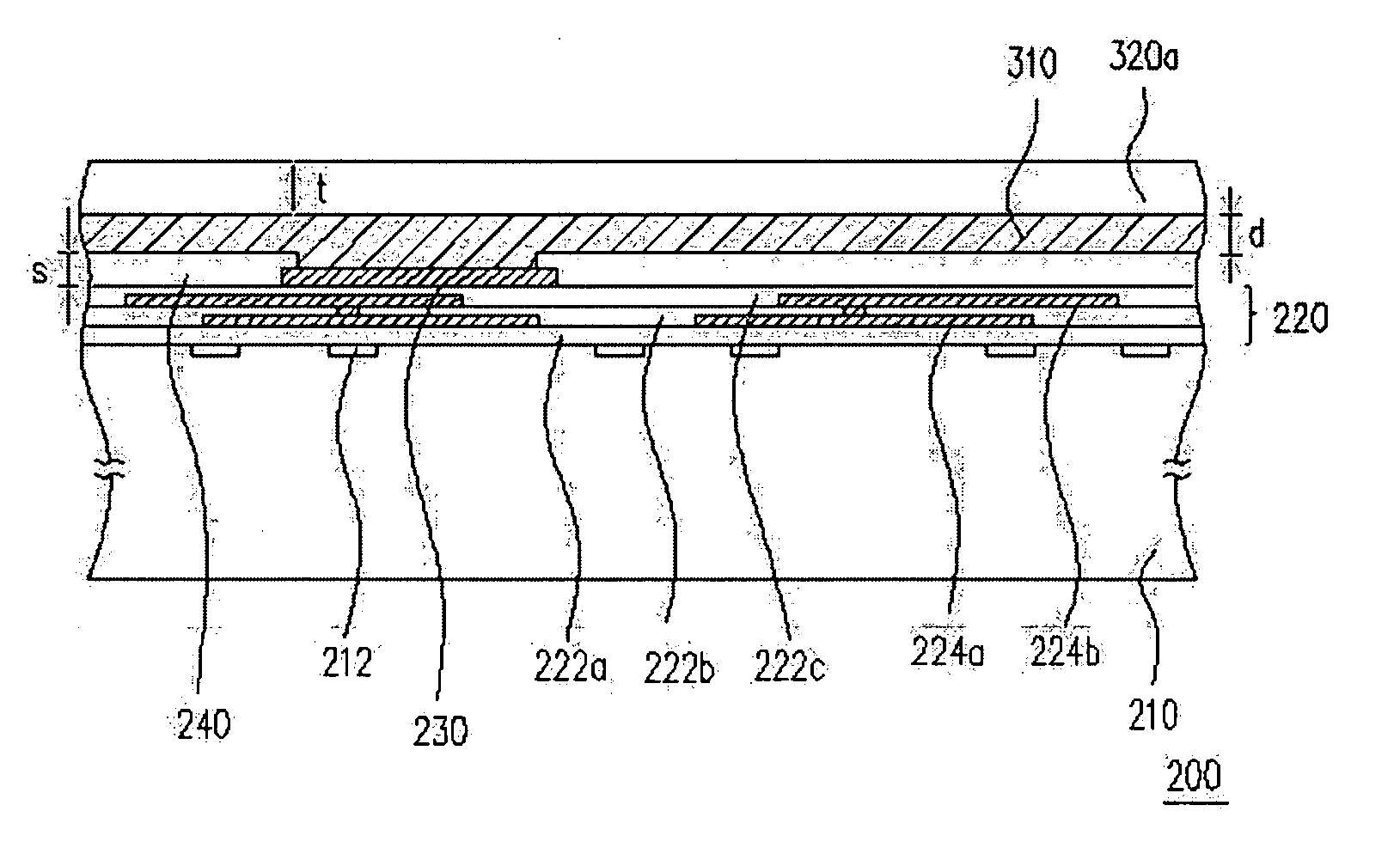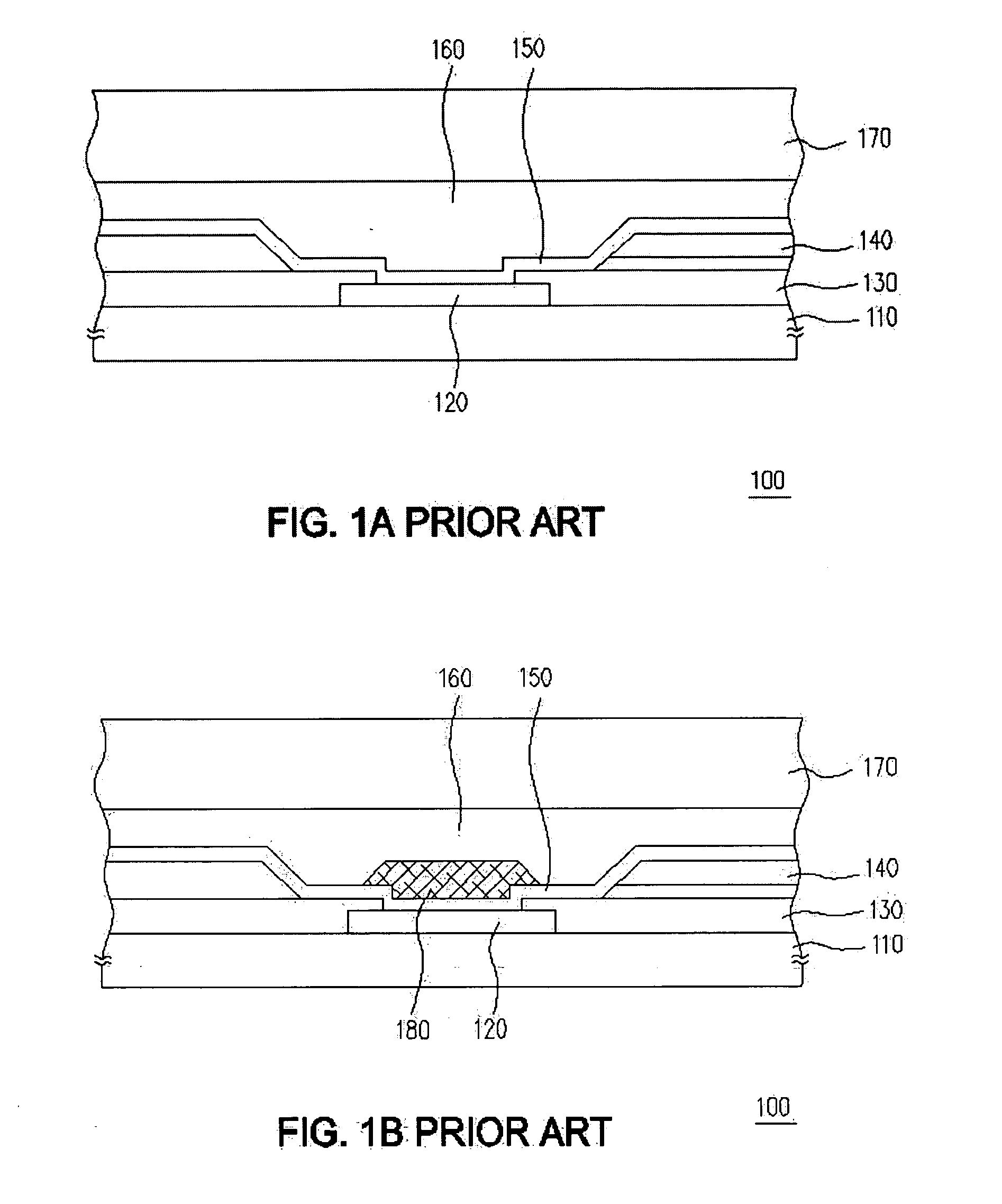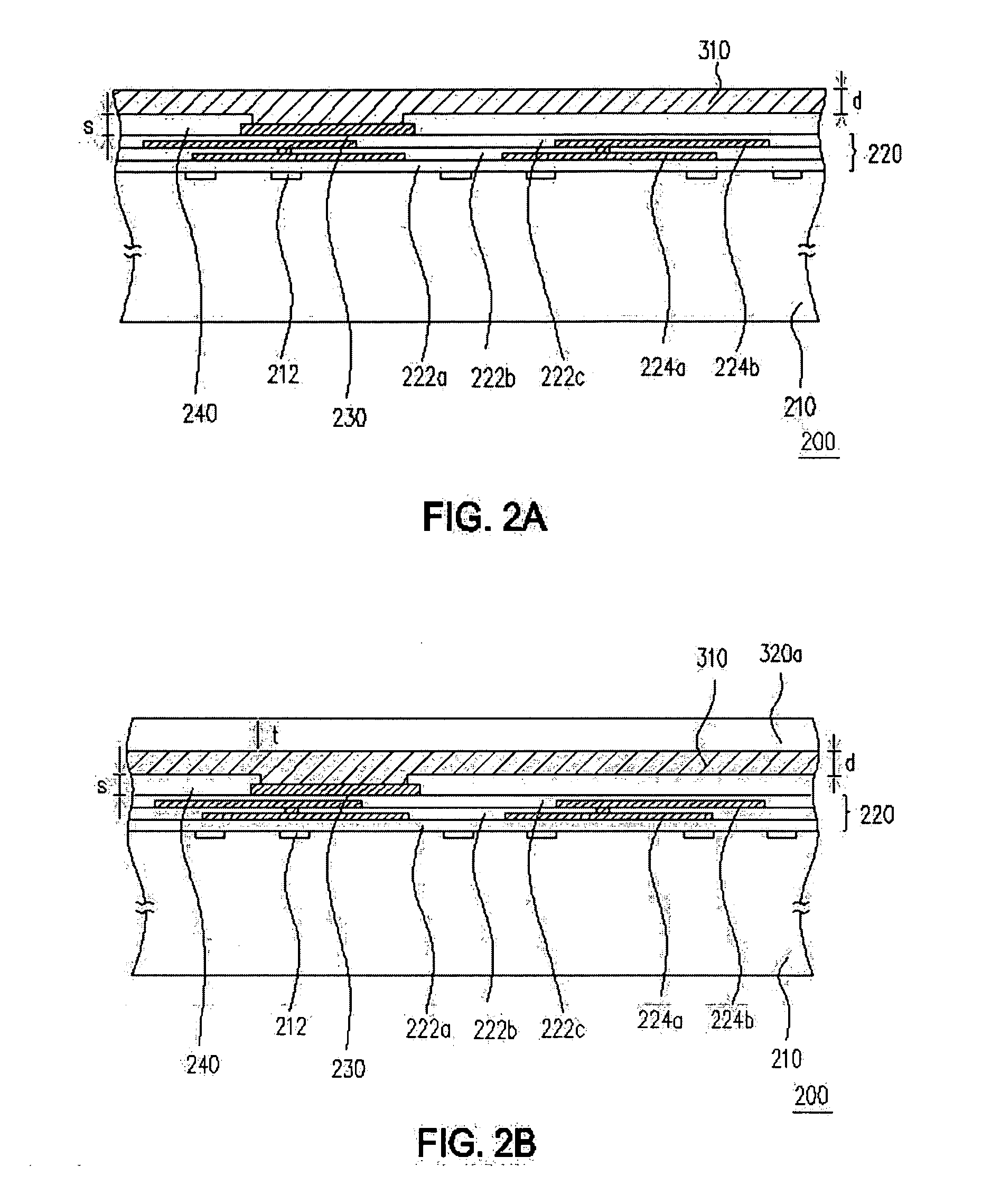Over-passivation process of forming polymer layer over IC chip
a technology of ic chip and polymer layer, which is applied in the direction of semiconductor devices, semiconductor/solid-state device details, electrical equipment, etc., can solve the problems of increasing production costs, affecting the quality of electrical signal passing through, and affecting the mechanical integrity of the jointing structure, so as to reduce the occurrence of inter-metallic compounds
- Summary
- Abstract
- Description
- Claims
- Application Information
AI Technical Summary
Benefits of technology
Problems solved by technology
Method used
Image
Examples
first embodiment
[0046]FIGS. 2A through 2C are cross-sectional representations of a over-passivation process of first preferred embodiment of the present invention. As shown in FIG. 2A, the over-passivation process comprises the following steps. First, a semiconductor wafer 200 is provided, wherein the semiconductor wafer 200 comprises a silicon substrate 210, an interconnection structure 220, a connection pad 230, and a passivation layer 240. The silicon substrate 210 has multiple active semiconductor devices composed of either transistors or MOS transistors, or both, even plus passive devices. Multiple electronic devices formed in or on the silicon substrate can be, for example, bipolar transistors, MOS transistors or passive devices. The electronic devices are the sub-micron devices, such as 0.18 micron, 0.13 micron or 0.11 micron CMOS devices, or sub-hundred-nanometer devices, such as 90 nanometer, 65 nanometer or 35 nanometer devices. The electronic devices 212 are placed in and on the the sili...
second embodiment
[0065]FIG. 4 is the cross-sectional representation of the over-passivation process of the second preferred embodiment of present invention. Some reference numbers appearing on the second embodiment are the same as those of the first preferred embodiment; in such case it means the elements referred by both embodiments are the same or similar.
[0066] In the second preferred embodiment, a patterned polymer layer 410 is first formed on the passivation layer 240, and a patterned metal circuit layer 420 is subsequently formed over the patterned polymer layer 410. More specifically, the step of forming the patterned polymer layer 410, as is briefly depicted above, comprises first forming an imide-oligomer layer, precursor layer, over the passivation layer 240; followed by curing. The polyimide is cured with a temperature cycle by heating the imide-oligomer layer upto a peak temperature between 200° C. and 320° C., and staying at about peak temperature for more than 20 minutes. The peak tem...
third embodiment
[0068]FIG. 4 is the cross-sectional representation of the over-passivation process of the second preferred embodiment of present invention. Some reference numbers appearing on the second embodiment are the same as those of the first preferred embodiment; in such case it means the elements referred by both embodiments are the same or similar.
[0069]FIGS. 5A and 5B are the cross-sectional representations of a over-passivation structure of a third preferred embodiment of the present invention. Some reference numbers appearing on the third embodiment are the same as those of the first preferred embodiment; in such a case it means the elements referred by both embodiments are the same or similar.
[0070] Referring to FIG. 5A, the over-passivation process comprises the following steps. First, a chip 200 is provided. Then a patterned metal circuit 510 is formed on the passivation layer 240. Hereafter a patterned polymer layer 520 is formed on the patterned metal circuit 510; the material us...
PUM
| Property | Measurement | Unit |
|---|---|---|
| peak temperature | aaaaa | aaaaa |
| peak temperature | aaaaa | aaaaa |
| temperature | aaaaa | aaaaa |
Abstract
Description
Claims
Application Information
 Login to View More
Login to View More - R&D
- Intellectual Property
- Life Sciences
- Materials
- Tech Scout
- Unparalleled Data Quality
- Higher Quality Content
- 60% Fewer Hallucinations
Browse by: Latest US Patents, China's latest patents, Technical Efficacy Thesaurus, Application Domain, Technology Topic, Popular Technical Reports.
© 2025 PatSnap. All rights reserved.Legal|Privacy policy|Modern Slavery Act Transparency Statement|Sitemap|About US| Contact US: help@patsnap.com



